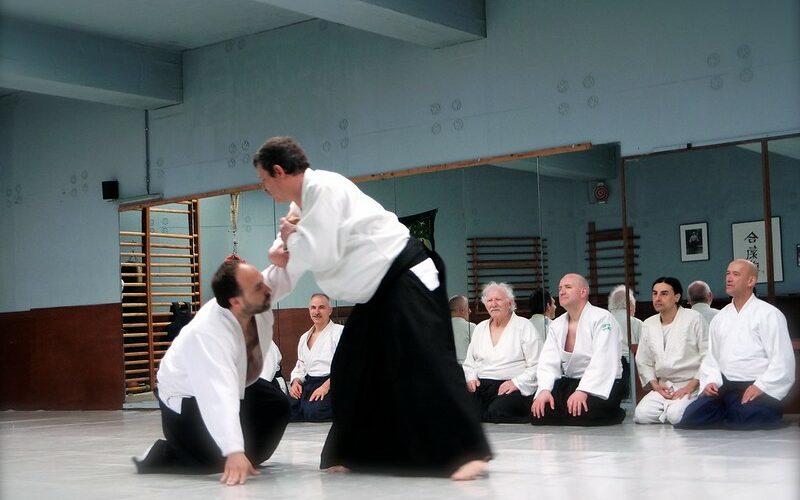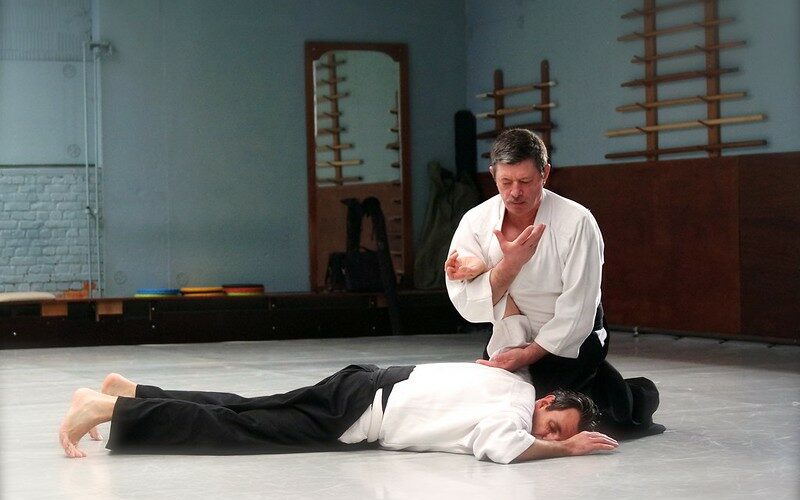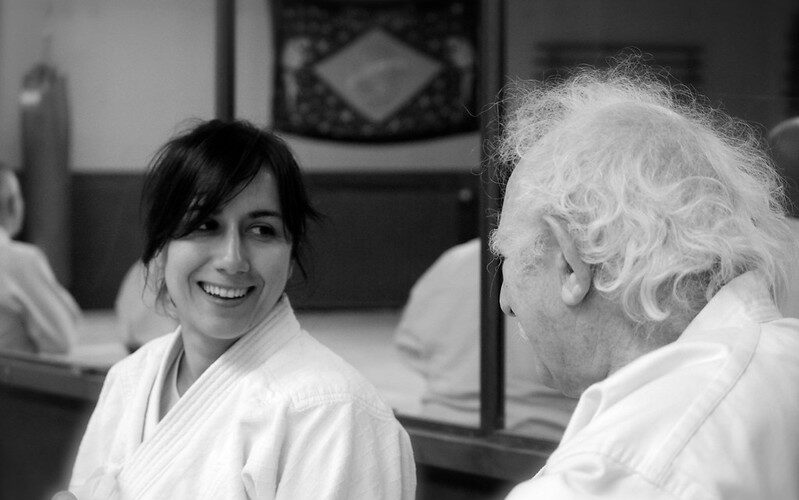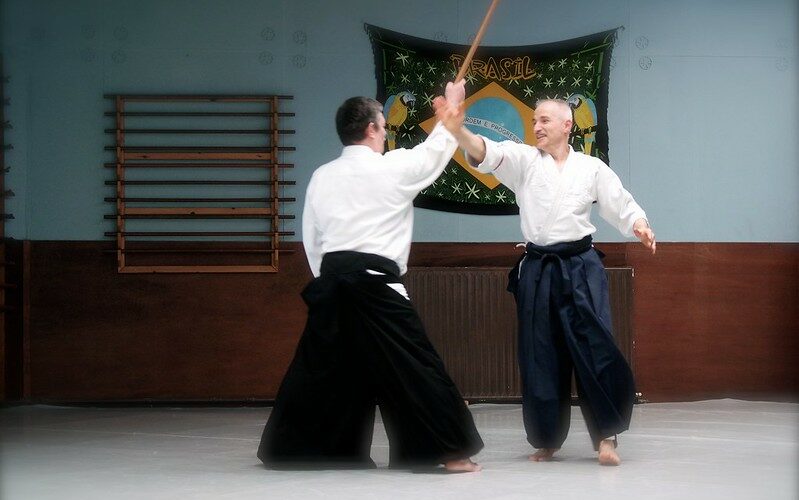What is Aikido Brussels ?
Aikido is a modern Japanese martial art created in the early 20th century by Master Morihei Ueshiba (1883-1969).
It is derived from several traditional budo disciplines, such as wrestling, jiu-jitsu, fencing and various schools of weaponry. It achieves a synthesis that both integrates and transcends these disciplines.
Aikido, Way Of Harmony
In Japanese, Aikido means “the way of harmony with the vital principle of nature“.
What does this mean, especially in the context of a practice rooted in the martial arts?
Japanese martial arts, inspired over the centuries by contact with Eastern religious and philosophical traditions such as Zen Buddhism, have gradually become more refined. This has led to a form based both on an inner quest, the way of the warrior (budo), and on technical efficiency (jitsu).
In Aikido, the concept of budo is transcended into the art of peace. “Winning without fighting is true victory“, one can read in the precepts of budo. But beyond victory and defeat comes for man the question of self-realisation, in harmonious union with other men and with the universe that surrounds them.
Aikido is therefore a martial art of peace, with eminently humanistic horizons, in which inner strength and serenity resonate with and echo a natural cosmic dynamic.
Developping The Potential In Every Human Being
More prosaically, aikido techniques help develop the potential inherent in each person, building the autonomy of the individual through social bonds and interaction.
The benefits of regular exercise are many and varied.
- On a health level, aikido improves vitality and allows the body to strengthen while prioritising fluidity of movement.
- On a psychological level, it promotes the development of the personality through work on concentration and willpower.
- On a social and philosophical level, Aikido places conflicts and their peaceful resolution in an original perspective and invites us to consider our relationship with others with fresh eyes.
It is clear that these different aspects appear as multiple facets of a single entity, just as the variety of techniques and practices in Aikido reflect so many aspects and qualities that can be developed in turn.
The Art In Practice




Aikido consists of a series of empty-hand techniques of throws and immobilisations on various forms of attack (grabs and punches) and is complemented by the use of (wooden) weapons: sword (bokken), staff (jo) and knife (tanto).
In aikido, the practice of weapons is not a parallel and independent discipline, but it is understood as a form of work that allows the development of a number of qualities necessary for correct form, such as posture, precision, distance, etc. The practice is also carried out at different levels (standing – kneeling), and in different modalities (soft – hard).
As Aikido is by definition not a combat sport, it is important to note that there is no fighting during practice, nor organised competitions. Progression along the path of Aikido is based on the endless repetition of techniques, which become like so many tools to shape the person.
The dojo is not a boxing ring, but a sculpture workshop.
Aikido Brussels Gradations
It is also important to note that the notions of grades, rankings and exams are not structured within our dojo, which is quite unusual in today’s aikido landscape.
We believe that a practice without these concepts in no way impedes technical progress, and does more justice to the spirit of this martial art that aims at peace in general, and non-violence and non-competition in particular. From what grade does one become a realised person?
In the dojo the emphasis is on respect for yourself, your partner, the teacher, the dojo… and on a good mood!
We strive to build a solid but friendly framework that allows everyone to discover and understand the subtle art that is aikido, without risk of injury.
Aikido And Injuries
It is also important to note that the notions of grades, rankings and exams are not structured within our dojo, which is quite unusual in today’s aikido landscape.
We believe that a practice without these concepts in no way impedes technical progress, and does more justice to the spirit of this martial art that aims at peace in general, and non-violence and non-competition in particular. From what grade does one become a realised person?
In the dojo the emphasis is on respect for yourself, your partner, the teacher, the dojo… and on a good mood!
We strive to build a solid but friendly framework that allows everyone to discover and understand the subtle art that is aikido, without risk of injury.
Aikido Brussels & Etiquete
There are all kinds of etiquettes. Between the labels on the products on the supermarket shelves and those we stick on our foreheads to sell ourselves better, we have a choice.
In aikido, etiquette rhymes with ethics, and becomes its younger sister, if we agree to reinvent the bonds of etymological descent in the French language.
This recourse to jokes allows us to note in passing that etiquette does not have the formal and strict character of a set of rules of conduct that every practitioner is obliged to observe on pain of being mistreated or delayed in his or her progress, but is rather the expression of a natural and spontaneous attitude associated with an adequate understanding of aikido and its philosophy. In particular, the notions of respect already evoked above.
